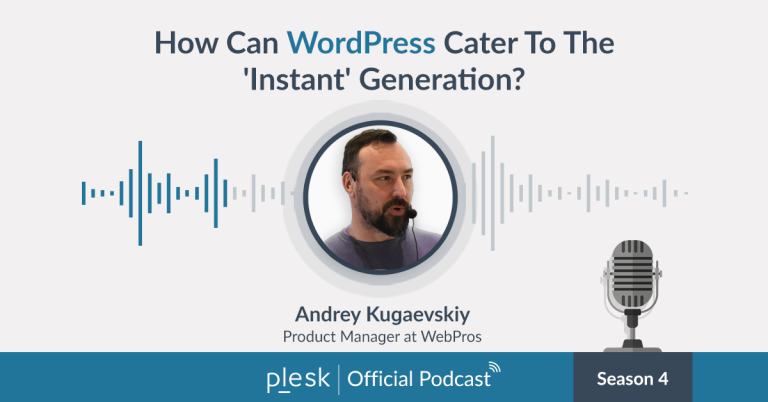
Despite having a bad rep in the world of marketing, stock photographs are a valuable asset that we cannot ignore. Whether it’s for a digital marketing campaign or display advertising, stock images are often utilized when custom photographs are not available or within reach.
But in some web design circles, stock photographs are considered infamous for being cliche, overused, and impersonal. Many marketers also say that the readily available collection of images don’t do justice in representing their brand. It can come off as too salesy as well and drive potential customers away.
However, when we look at it factually, stock photos are neither good nor bad. Their impact really depends on how they are used and sourced. If you’re lazy in your stock photo selection, the results of your marketing efforts will suffer.
Conversely, suppose you do manage to choose stock images tastefully and effectively. In that case, you may acquire one of the most affordable and versatile elements for your marketing strategy.
Below, let’s take a look at some do’s and don’ts of stock photography that will help you maximize their potential.
Do: Choose Relevant Images
Credible stock photo websites boast thousands and millions of images in every niche imaginable. And instead of filtering through the vast collection, most web designers and marketers simply use the first one they find attractive.
Yes, this may be a time-saving tactic but does the chosen image relate to the message you’re trying to convey? Does it compliment the tone of your marketing strategy?
Probably not!
A beautiful photo may be a great way to capture the audience’s attention. Still, it should also resonate with the overall theme of your content. Otherwise, you’ll miss a great chance of connecting with visitors. And probably end up confusing and disappointing them.
Narrow down your search when selecting from the best stock photo sites. Wherever you search for images, avoid using broad terms to find the most relevant one. Instead, use specific phrases and keywords that go with the image you have in mind.
It may take a while, but the results will definitely be worth it!
Don’t: Forget To Review Licenses
Each stock photography website comes with a license and copyright details that direct you to use the photos legally. Failure to comply according to the rules can result in a hefty fine, lawsuit, and even removing a site from the World Wide Web.
Stock photo licenses generally fall into three main categories: Royalty-Free, Rights Managed, and Extended.
- Royalty-Free: With this type of license, the stock photo agency entails a one-time fee for using the image multiple times and in a wide range of uses. They are pretty affordable as well and appeal to many budget-conscious, small business owners. The only downside is that they are non-exclusive, and given the low price, they are often purchased by many companies.
- Rights Managed: The Rights Managed license is customized according to your unique use. This means that you can tailor the usage rights as per your time frame, geographical location, and distribution volume. However, they are expensive when compared to other stock photography licenses. But yes, they do give exclusive usage rights that the others cannot grant.
Royalty-Free and Rights Managed licenses are flexible when it comes to using their pictures in a commercial medium. However, using these images is strictly prohibited in products you will resale, such as t-shirts and mugs. For this, you will need an:
- Extended License: With an extended license, you’re allowed to use the image in an end product that may be sold. You can also modify the images and utilize them to make a number of copies of the ‘saleable’ product.
When choosing images from a stock photography website, make sure to understand the licensing guidelines. Remember that each stock photo agency adds and removes the clauses according to their liking, so read the licensing details carefully in order to avoid legal trouble.
You should also remember that you’re not the owner of the photographs. And distributing them as your personal creation is prohibited by law.
Plus, most agencies don’t allow sensitive use of the images. This means that you’re not allowed to use them in any pornographic concept, illegal and criminal practices, and controversial topics that defame a specific race, gender, or promote violence.
Do: Make Edits
When using stock photographs, the most important thing to remember is that you don’t have to use them ‘as is.’ Generally, you’re allowed to make edits to these pictures and customize them according to your branding style.
However, the rules do differ from one agency to another. You must read the guidelines carefully before making any attempts at editing. Or else they may file a lawsuit for using their images wrongfully.
Plenty of free graphic design tools are available to help you out in photo editing. Some examples of the edits you can make to your stock photos:
- Crop the picture and use only the elements you require.
- Resize or flip the image to fit a specific layout.
- Add overlays and text to the existing image.
- Modify background colors with filters.
- Retouch to improve skin blemishes.
- Integrate ‘custom’ pictures within stock photographs.
The edits you cannot make to your stock photos:
- Modify images that are labeled as ‘editorial.’
- Use them in pornography.
- Use them in a political ad.
- Use them to represent a disease like AIDS.
- Authorize it as your own creation.
Don’t: Use Cliche Photographs
As I mentioned above, designers often avoid using stock photographs as they are cliche and appear EVERYWHERE. Abstract figures, a man pointing at floating objects, unenthusiastic models, and a very happy group of people posing with briefcases are just examples of overdone images on the internet.
Do yourself and the audience a favor by steering clear of pictures that appear unnatural, unrealistic, and clearly staged. You want your viewers to connect with the brand. Integrating pictures with false emotions will not provide value to the content. They’re also uninteresting, not engaging, and not at all helpful in closing the sale.
To make your visuals stand out, dig deeply through the stock photo database. Look for pictures that appear candid and unique.
Once you select the stock photographs suitable for your campaign, run them through Google Reverse Image Search or upload them on TinEye. These tools will recognize if the same image is being used elsewhere on the internet – especially in the same niche as yours.
Do: Optimize For SEO
Just like text, the images you use for your marketing strategy need to be optimized for SEO.
Firstly, they give important contextual information to search engines and enable internet users to find your online page easily. Secondly, optimized images speed up page loading, which in turn gives an extra edge to your brand’s engagement and search engine ranking.
Here are some ways to optimize your stock photographs according to the SEO guidelines:
- Resize images with large dimensions, so they load quickly.
- Name the image file with descriptive and relevant keywords/phrases.
- Add Alt Text to provide context and help visually impaired users too.
- Include an image caption (the words that appear right below the image on a website).
- Enable the images to load on both – mobile and desktop devices without any glitches.
Don’t: Neglect Quality
Stock photo sites, especially those that offer them for free, get a lot of submissions from photographers. And in many cases, the host websites don’t vet each and every one for quality. Because of this, you may come across pictures that lack the standard you require.
Let’s get this straight: Images that are dark, blurry, pixelated, or have low-resolution will not help you attract many visitors. In fact, they might do just the opposite and drive people away.
This is why, when you’re choosing images for your website, make sure to go for colorful and as high-resolution as possible.
Do: Try Creating Your Own Images
Nowadays, many of us have the ability to create outstanding photographs – thanks to our smartphones and DSLR cameras. If you have a knack for photography, you don’t need to rely on stock photographs alone.
Instead, combine them both in your marketing strategy to connect better with the prospects.
For example, use pictures of your own employees rather than opting for a robot customer service representative. If you’re running an online store, you can also add photos of your own product or show them ‘in use’ to give the viewers a visual experience.
Don’t: Forget These Tips
The benefits of visual components within a marketing strategy have been well observed over the years. According to Brain Rules, people retain 65% of the information they receive through visuals. In comparison, they are only able to remember 10% of the text three days later. Images are also processed 60,000 times faster than text, and 90% of the information transmitted to the brain is visual.
So, when given a choice – a stock photo is way better than not using an image at all!
However, do tread with care when using stock pictures. Don’t forget the above do’s and don’ts of using stock photography and integrate them to make your visual identity stand out.






